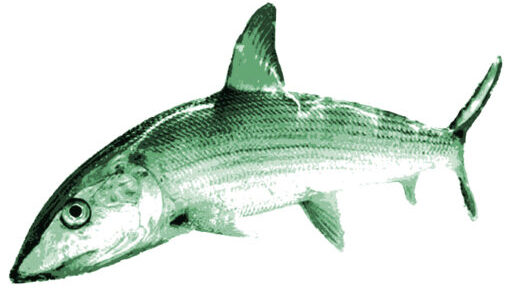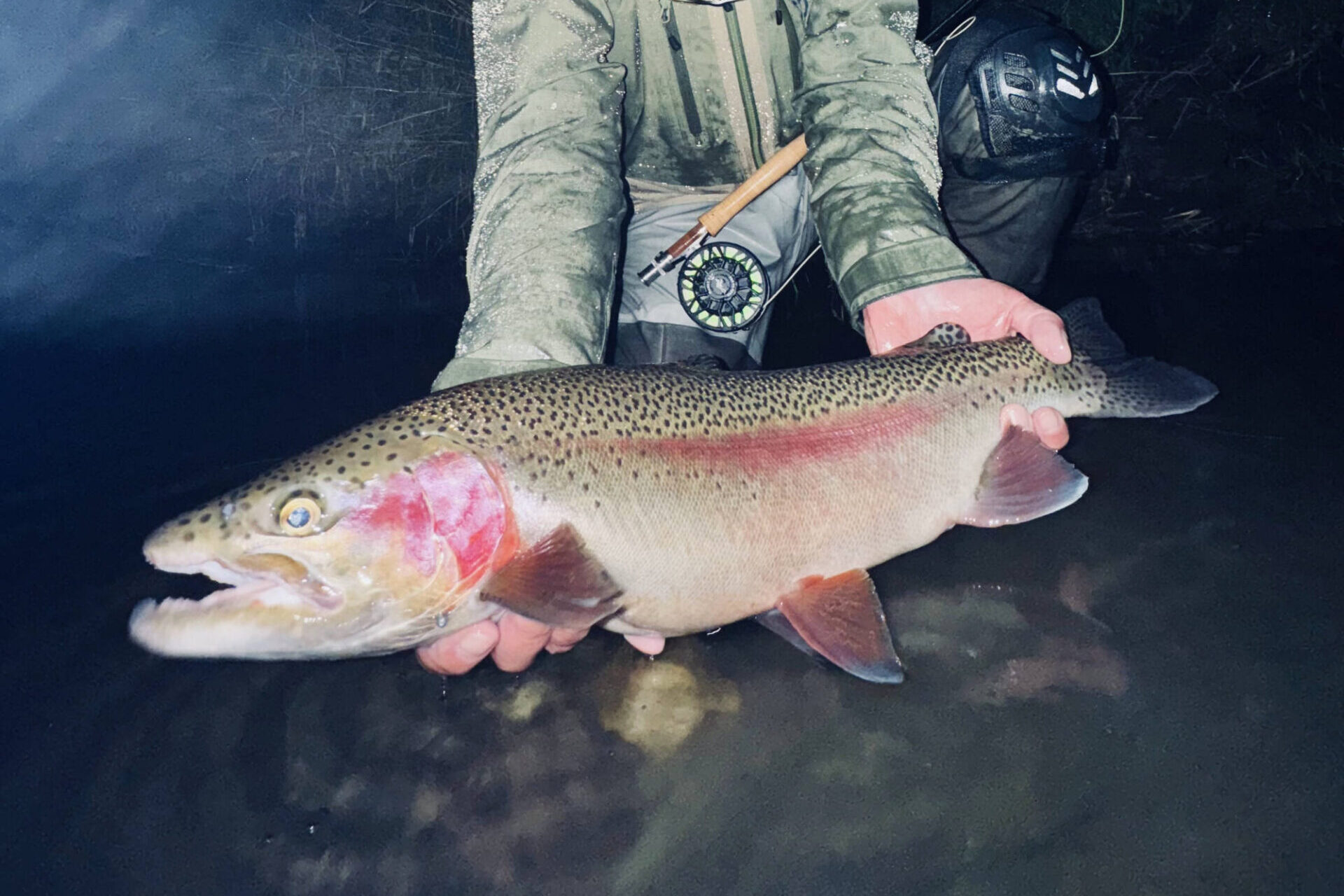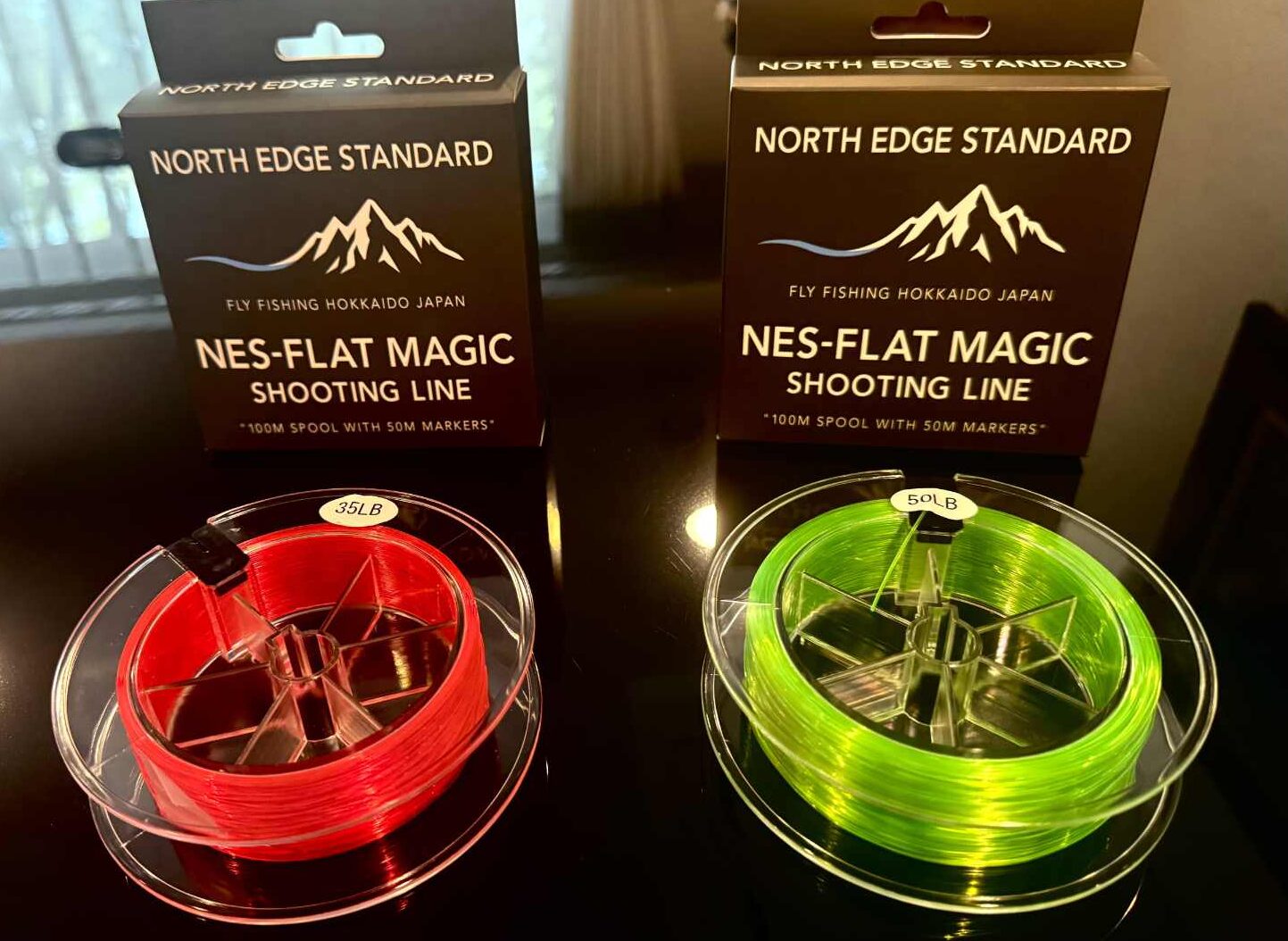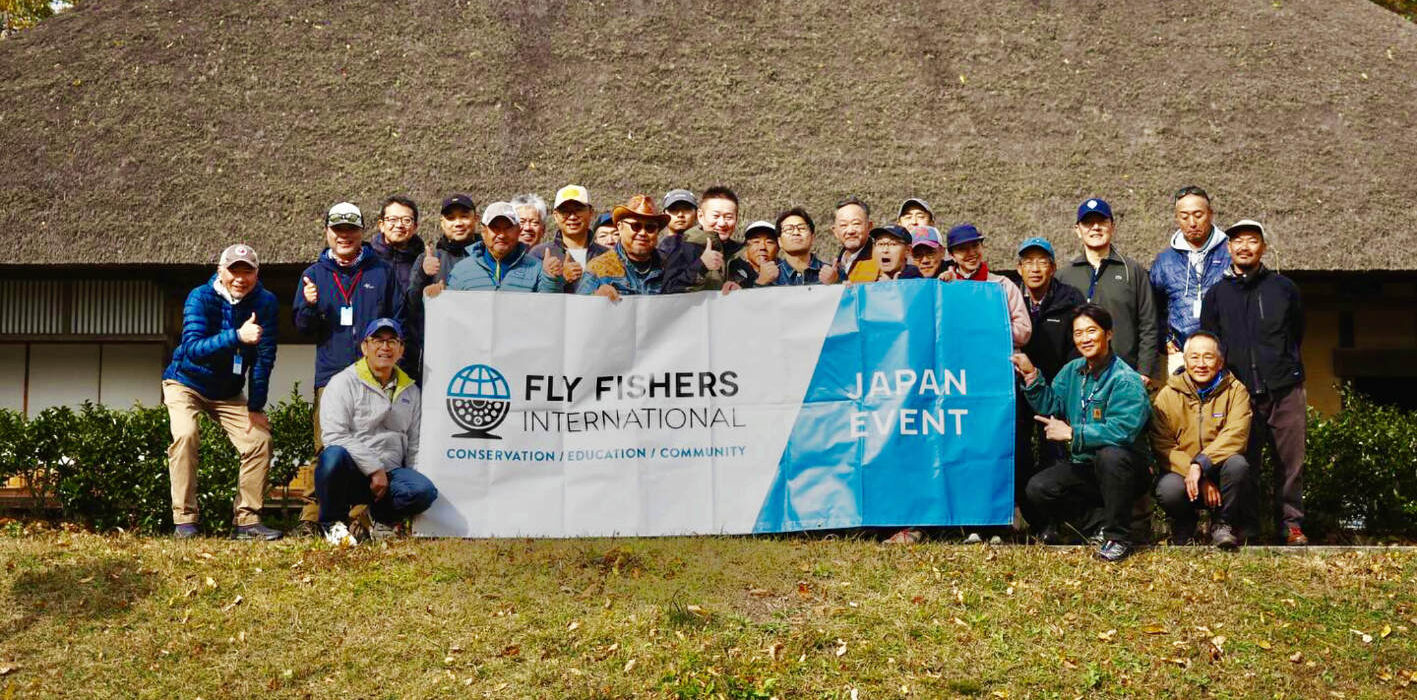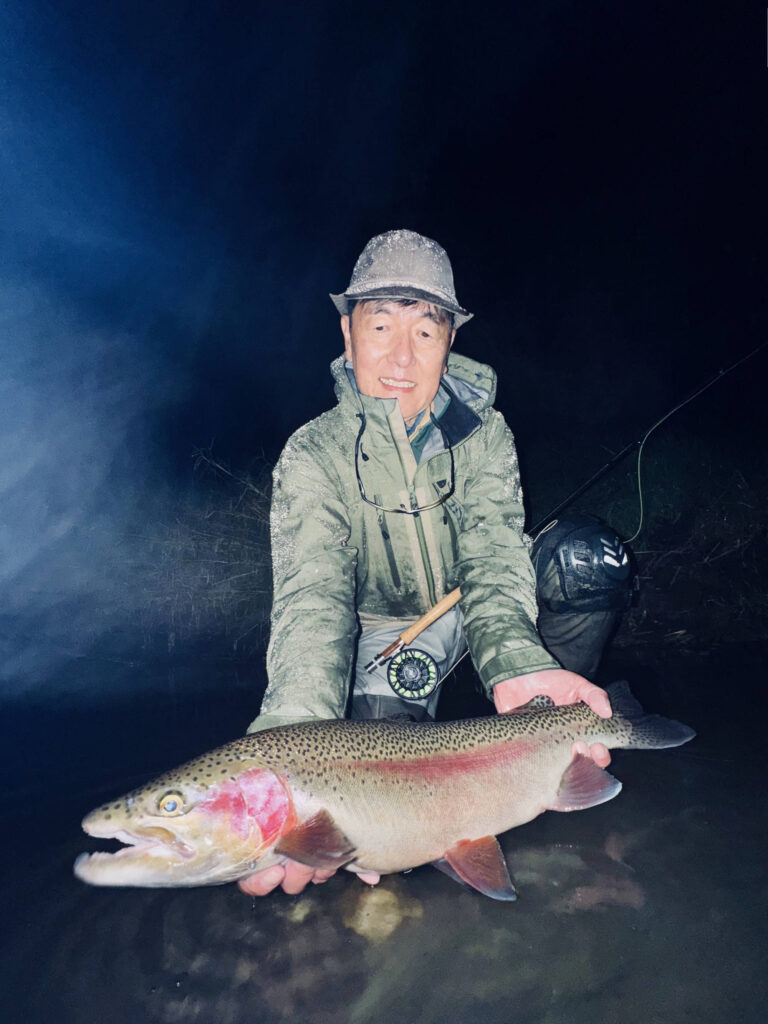
Steelhead: 75cm (30 inches), Rod: G.Loomis Asquith 690-4, Line: 6WT, Reel: Abel SDF 6/7
(10-20-2025 →Click here for English)
目的の川に着いた時、時刻はすでに夕刻4時を回っていた。日没まで30分。
10月中旬の今、晩秋の門を叩いた北の北海道は、シトシトと降る雨も加わって間もなく夜の帳 (とばり)に吸い込まれようとしていた。
これからの1時間、この渓流の一箇所を狙うために友人の翔平の車で2時間飛ばして来のだ。
その目的は、スチールヘッド。
元々、例年10月中旬から11月というこの時期に、僕が北海道に来る目的は大河 天塩川のスイングでイトウを狙うためで、今回もそのつもりだった。
しかし10月中旬現在、天塩川は、過去数十年来見たことのないほどの大減水に見舞われている。
あの天塩川と言う大河のあちこちで川底が水上に露呈していて、水量が少ないから流れの速さも心許ない。
この夏は、この北の大地においても連日の熱暑を免れることはなかった。鮭の遡上数も極端に少ない。
イトウの海からの本格的な回帰も当面期待できそうもないと思うと、スイングフィッシングをやっても気分が乗れそうにない感じだ。
翔平に、「この6月にイトウ釣りでいい思いをしたあの場所でやるのはどうか?」と相談した。
「“例のあの場所”に行けば、確かにイトウに出会えるチャンスはあるかもしれませんが、今の天塩本流の様子では地元のトロフィーハンターも同じことを考えるだろうから、別のアングラーと鉢合わせする可能性が高いでしょうね。誰も居なくても場荒れしている可能性もある。」
確かにそうだね。となると残る選択肢はあそこかぁ、、と言うことでイトウのスイングをやりにそこに向かった。
その場所は川のコンディションは悪くなかったけど、3時間スイングし続けても何も起こらなかった。
午後2時を回った頃に翔平に声をかけた。
「この1、2週間、スチールが海から差しているから、今から2時間車を飛ばせば、僕の好きなあの川で夕方のラストチャンスの1時間、トライできる。やってみようぜ!」
この2日間、僕はイトウが釣れる見込みが低そうなので渓流に退避して釣りをして来たのだけど、実はこの時点で既に60cmクラス含めてスチールヘッドを2本釣っていた。
翔平は、躊躇せずに返して来た。
「そうしましょう。あの川の一箇所で、先週50cm位のが一匹ヒットしてそいつを手元に寄せてくる時に、おそらく70cm超えと思われる奴が追尾してきたスポットがあるんですよ。スチールは、今、正に海に戻ろうとするラストのタイミングで、まだ海に戻っていなければ、まだあいつに巡り会えるチャンスはあるかもしれない。」
その川は、僕が北海道の中でも最も好きな渓流の一つで、3年前のイブニングでもビッグドライで素晴らしいスチールヘッドを釣ったことのある川だった。
北海道の道北、道東のいくつかの河川では一年のうち一、二回スチールヘッドが入って来るタイミングがあるのだけど、僕の知る限りスチールヘッドはわずか2、3週間だけ川に入って来て直ぐに海に戻って行く。川に留まる時間が余りに短く、釣り師が殆ど構わない場所に留まっている傾向があって、おまけに山の神(熊)に護られている場所が殆ど。だから、僕が翔平に教えてもらった川では基本的に他の釣り師に会うことはない。
YouTubeやSNS等で北海道の大型レインボーをアップしているアングラー達の画像をチェックしていると、時折、釣ったご本人は気付いていないかもしれないけどスチールヘッドと思われる魚体をアップしている方のシーンを見るので、おそらく僕の知るよりももっと多くの河川にスチールヘッドは入って来ているのだろう。
日本にスチールヘッドというネイティブトラウトが生息していることを、学術的に確定した研究論文は出ていない。
でも、海に降りるレインボートラウトをスチールヘッドと呼んでいいのなら、北海道にスチールヘッドがいるのは紛れのない事実と僕は確信している。
世界にはイトウもアメマスも同属の種が5種類ほどいて、例えば、北海道の稚内からは50kmしか離れていないサハリンに棲むイトウ(Parahucho perryi)は北海道のそれと全く同種だ。更に1000km北のカムチャツカ半島には、北海道と同種のアメマス(Salvelinus leucomaenis)がいて、共に遺伝子の差がほとんどないことが確認されている。カムチャツカ半島はスチールヘッドが棲息する場所としては世界最西端であることとして知られているが、北海道のイトウ、アメマスがその生息域を極東ロシアと共有している以上、スチールヘッドがネイティブとして北海道にいても全く不思議ではないはずだ。北海道では河口周りの海水域に仕掛けた刺し網にスチールヘッドが入っていることはよく聞くことだし、その事実からして降海性のレインボートラウトが北海道の沿岸部、河川に来ていることは確かだ。自分が学生時代に澤田賢一郎さんから、岩手県沿岸部の町で漁師達の水揚げの中にスチールヘッドの姿を見た、と言っていたのを今でも覚えている。
僕の知るところの北海道の幾つかの川では、海から上ったスチールヘッドが川に留まるのは2、3週間だけで、魚の活性の高さとコンディションの良さを見るに産卵のために川に入って来ているようには見えない。だからもし産卵のために母川に回帰していないのならそれはネイティブではない、と言う主張があるとすれば僕はそれには反論できないし、同時に2、3週間の短期間で絶対産卵していないと断言する術も僕は持ち合わせない。
北海道のスチールヘッドのルーツにもう一つの可能性があるとそれば、それは1877年にカリフォルニアからスチールヘッド系のレインボーの原種が北海道に初めて移入されていたと言う事実が公文書の記録にあるので、もしかするとその子孫の一部は先祖帰りした本能で海に降りる個体もいるのかもしれない。でも全く同じカリフォルニア産のレインボーの原種は、1883年にニュージーランドに移入されていて、「その末裔が海に降りている形跡はない」 とニュージーランドの学術論文は結論づけているので、多分この仮説は成立しないであろう。(因みにニュージーランドのブラウントラウトは降海する変種がいることは学術的コンセンサスがある。)
北海道のスチールヘッドは、海外から移入されて来た外来種ではなく、ネイティブトラウトである可能性はかなりあり、もしかすると北海道の渓流にいる居付きのヤマメやイワナと同じく、日本のネイティブフィッシュとしてのレインボートラウトが現在進行形で存在している可能性は十分ある、と僕は思っている。北海道には養殖された個体を一切入れていないのに(大昔は不明だけど)、レインボートラウトが自然繁殖している川は結構ある。いずれにしても魚のDNAを調べればこの検証は直ぐにできるのに、この事実を検証する研究者がいないのは残念な話だ。
僕と翔平は、魚を手にしたとき、いつも二つのことを心に留めている。
ひとつは、ランディングした魚を決して河原の石や砂利の上で暴れさせないこと。
もうひとつは、魚が水の外にいる時間をできる限り短くし、できるだけ早く川へ帰してやることだ。
サイズを知りたいときは、ランディングネットのグリップやロッドブランクの位置関係から目測する。
——それだけで十分、目的は果たされるのではないだろうか。
降海性のネイティブトラウトが、いまも北海道に生きているというのは疑う余地のない事実。
フライフィッシャーとして、僕たちが魚に対してしていることが無害だとは決して言えない。
釣りという行為そのものが、敬愛する魚に触れ、傷つけてしまう行為だからだ。
それでも——もしこの貴重なネイティブトラウトを絶やしたくないと本気で願うなら、僕たちは、自分にできることのすべてを尽くさなければならない。少なくとも、そのことだけは確信をもって自分の心に留めたいと思っている。
翔平が案内してくれたポイントは、いかにも魚が付きそうなストラクチャーに満ちていた。
沈木の横の深み、完璧なバブルレーン、そして対岸に沿ってえぐれとなっている溝。
どのスポットにも、魚が潜んでいそうな気配があった。
それらの筋を丁寧に探ろうとしたとき、翔平が僕を止めた。
「真崎さん、そのあたりを狙いたい気持ちはすごくわかります」と彼は言った。
「でも、この時間帯に奴らが着くのは、だいたい6メートルほど先の、水深60センチくらいの場所なんですよ。鮭が産卵床にしそうな平らな砂利の上。もしスチールヘッドがまだ残っているなら、その浅瀬で鮭のこぼれイクラを拾っているはずです。」
「なるほど、了解。」と僕は答えた。
わずか30分前までは、山々に雄鹿の求愛の遠笛である「キューン」と言う音がこだまし、川面すれすれをヤマセミが夜のねぐらへ向かって滑空していたが、釣りを始めて1時間ほど経つ今、谷は一層の闇と静寂に包まれていた。
6m先のインディケーターも、ほとんど見えない。
「そろそろ終わり時かな」と思ったが、
1時間前にしつこく攻めた本命のスポットに、最後の2投だけして締めることにした。
ほとんど暗闇の中、感覚だけを頼りにフライをドリフトさせると、インディケーターがふっと水中に吸い込まれたように感じた。
軽くロッドを立てると、フライが川底の砂利に引っかかったような感触。
しかし次の瞬間、リーダーがゆっくりと横に滑り始めた。
テンションを保ちながら、ロッドを通してその感触を聴く。
微かな震えが、やがて重く、確信的な引きに変わっていく。
そして突然、爆発的な力で魚は対岸の沈木へ向かって突進した。
その沈木にラインを引き込まれないように少し強引にロッドを寝かせると、薄闇の中、水面に巨大な尾が叩きつけられ、水飛沫が上がるのが見えた。
「うおっ、スチールヘッド! デカいっす!」と翔平が叫んだ。
百戦錬磨で、どんな大物を見ても表情を変えない男が、そう叫ぶのは珍しい。
そして小声でつぶやいた。
「正直、あれをランディングするのはちょっと怖い……」
「翔平にしては珍しいな」 と笑いながら僕は言った。
「バッチリ口に掛かってるし、落ち着いてやれば獲れるよ。」
翔平は首を横に振った。
「でも、あのサイズで、この暗さですからね。何が起こるかわからない。
時間をかけすぎると、1Xのリーダーが奴の歯で擦り切れる可能性があります。」
彼の助言はいつも気味が悪いほど正しく正確だ。
去年、僕は似たサイズの魚を焦って寄せ、2Xの針を伸ばされてバラしたことがある。この時、そいつをバラす前に翔平が僕に放っていた言葉は、「真崎さん、奴の目にはまだ生気に漲ってますよ。注意しないと!」だった。
今夜は逆に、時間をかけすぎるリスクが迫っていた。
勝負を早めに決着させることにした。
すでに周囲は完全な闇。
スチールヘッドも逃げ道が見えないためなのか、ネットを嫌って反転したあとに、いつものようにあまり遠くまで走らなかった。
数回のランディングの試みの後、思ったよりも早く、その魚は陥落した。
ランディングネットの中には、想像以上に大きなスチールヘッドが横たわっていた。
フライをつけたまま優しく抱き上げ、翔平の大きなネットのグリップに合わせて測ると、およそ75センチ。
深い体高、傷ひとつない銀鱗、そして幾多の敵や酷暑を乗り越えてきたであろう老練な風格。
もしこの魚が、外洋でベイトフィッシュを食べて育つ降海型でなければ、川の中の餌だけでこれほどの筋肉質な体を維持することは到底できない。
——だから僕は確信している。
北海道には、スチールヘッドがいる。
周囲は闇に包まれていた。
その魚体を水に浸けながら、その見事さに見入っていると、いつの間にかあたりは妖雲に包まれていた。
そして数秒後、リーダーのテンションがふっと消えた。
リーダーは静かに切れたのだ。
スチールヘッドは、ゆっくりと深みに向かって泳ぎ去り、その大きな背中を残して闇の中に溶けていった。
胸の奥に、ひとつの物語が終わったような静かな余韻が残った。
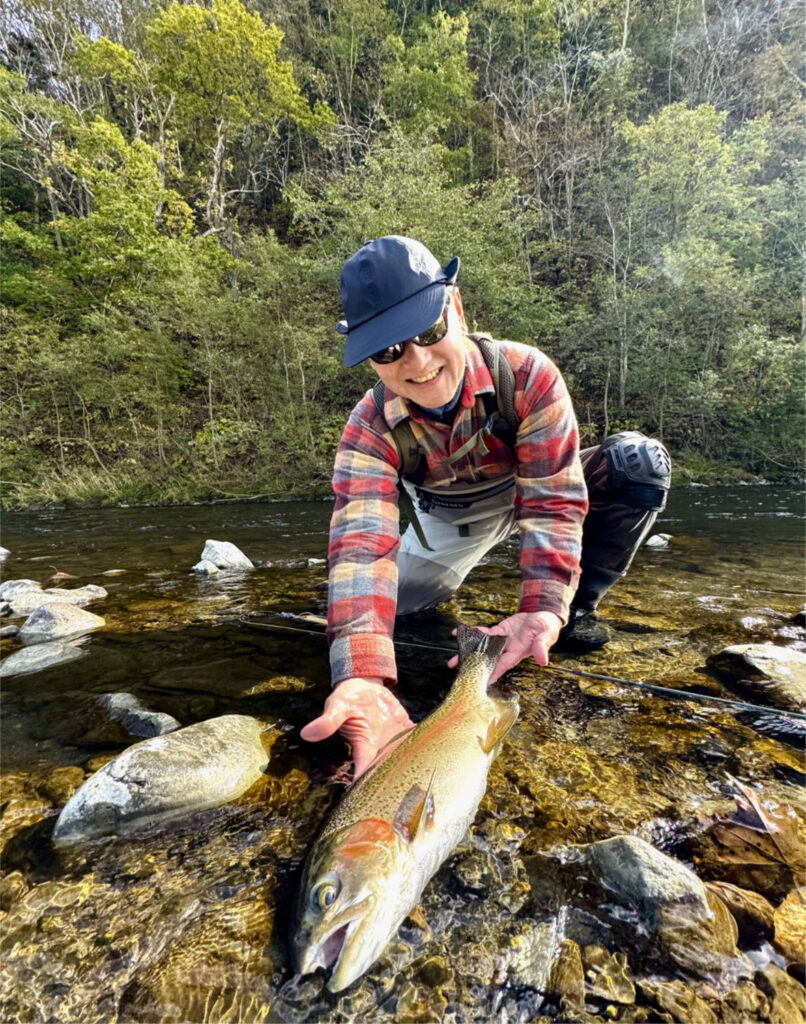
61cm (24 inches) steelhead in different river.
By the time we arrived at our destination river, it was already past four in the evening — just thirty minutes before sunset.
In mid-October, northern Hokkaido had already stepped into the doorway of late autumn.
A gentle drizzle blurred the mountains, and the landscape was about to be swallowed by the curtain of night.
For the next hour, we had only one mission: to fish a single stretch of this mountain stream.
My friend Shohei and I had driven two hours straight to get here for this very purpose.
Targeting— steelhead.
Originally, my reason for coming to Hokkaido in mid-October through November each year was to target taimen — the legendary fish of the great Teshio River, using the swing technique.
That was my plan this time as well.
However, right now the Teshio River is suffering from an extraordinary drought, the likes of which we haven’t seen in decades. In many sections of that vast river, the riverbed is exposed to the sun, and the current, starved of volume, has lost its strength.
Even here, on this northern frontier, summer’s relentless heat spared no one.
The number of salmon returning from the sea has dropped dramatically, and the taimen’s migration from the ocean has barely begun.
With the river so lifeless, even the thought of swinging a fly there fails to stir my spirit.
I asked Shohei, “What do you think about trying that spot where we had a great time chasing taimen back in June?”
He thought for a moment and said,
“Yeah, we might get a shot at one there. But with the Teshio running so low, I bet many local trophy hunters are thinking the same thing. Chances are we’ll bump into someone, or even if we don’t, the water might already be overfished.”
He was right.
So that left us with only one other option. We decided to head there and try swinging for taimen.
When we arrived, the river’s condition wasn’t bad at all, clean flow, just the right color.
But after three hours of steady swinging, not a single sign of life. Nothing happened.
Around two o’clock, I turned to Shohei and said,
“Steelhead have started running up from the sea over the past couple of weeks.
If we drive for two hours, we can reach my favorite river and get in a last-chance evening session, one hour before dark. Let’s give it a shot!”
Over the last two days, since the odds of catching a taimen seemed slim, I’d been retreating to smaller streams. And, truth be told, I had already landed two steelhead there, one of them around 24 inches.
Shohei didn’t hesitate.
“Let’s do it,” he said. “There’s one particular spot on that river, last week I hooked a 20-inch fish there, and when I brought it close, a much larger one, probably over 28 inches, chased it right up to my feet. Steelhead are right at the tail end of their run now. If that big one hasn’t dropped back to the sea yet, we might still have a chance to meet him.”
That river happens to be one of my absolute favorites in all of Hokkaido.
Three years ago, during an evening hatch, I caught a magnificent steelhead there on a big dry fly.
From what I’ve observed, in several rivers of northern and eastern Hokkaido, there are one or two very short windows each year when steelhead enter from the sea.
They stay for only two or three weeks before returning to the ocean, too brief a stay for most anglers even to notice.
These fish tend to hold in quiet, untouched places, often under the protection of the mountain gods, the great grizzly bears.
That’s why, in the river Shohei showed me, I almost never run into another angler.
When I look through photos and videos that Japanese anglers post on YouTube or social media, big “Hokkaido rainbows” proudly held up to the camera, I occasionally see unmistakable steelhead among them, though the anglers themselves might not realize it.
Which means there are probably far more rivers in Hokkaido holding steelhead than even I know.
There are no published scientific papers that have definitively confirmed the existence of a native trout known as the steelhead in Japan.
But if we accept that a steelhead is simply a rainbow trout that migrates to the sea, then I am convinced beyond any doubt that steelhead truly exist in Hokkaido.
Both taimen and white-spotted char have about five closely related salmonid species around the world.
But the fact is that the taimen (Hucho perryi) inhabiting Sakhalin Island, just 35 miles north of Wakkanai Japan, is genetically identical to the taimen seen in Hokkaido.
And further north, six hundred miles away on the Kamchatka Peninsula, lives the same species of white-spotted char (Salvelinus leucomaenis) as in Hokkaido, confirmed by studies showing virtually no genetic difference between them.
The Kamchatka Peninsula is recognized as the westernmost natural habitat of the steelhead in the world.
Given that Hokkaido’s taimen and white-spotted char share their range with populations in the Russian Far East, it would be no surprise at all if steelhead also inhabit Hokkaido as a native species.
It is not uncommon to hear reports of steelhead being caught in set nets placed in the seawater around river mouths along Hokkaido’s coast, and that fact alone confirms that anadromous rainbow trout return to Hokkaido’s coastal waters and rivers.
I still remember, from my student days, when Ken Sawada told me he had spotted steelhead among the local fishermen’s catches in a coastal town in Iwate Prefecture.
In several rivers I know in Hokkaido, steelhead or sea-run rainbow trout remain in the river for only two or three weeks. Judging from their vigor and perfect condition, they do not seem to enter for spawning. Yet if someone claims that they cannot be considered native unless they return to their natal river to spawn, I have no way to refute that argument — nor can I assert with confidence that they never spawn during such a short stay.
There is another possible explanation for the origin of Hokkaido’s steelhead.
Another possible origin of Hokkaido’s steelhead is that a wild, steelhead-type strain of rainbow trout was first introduced from California to Hokkaido in 1877, as recorded in official documents, and that some of their descendants may still migrate to the sea due to an inherited ancestral trait.
However, the very same Californian strain was also introduced to New Zealand in 1883, and scientific studies there have concluded that none of their descendants exhibit sea-run behavior.
Therefore, this hypothesis is probably invalid. (Incidentally, it is an accepted scientific consensus that New Zealand’s brown trout include sea-run forms.)
It is quite possible that the steelhead in Hokkaido are not an introduced species from overseas but a native trout. I believe there is a good chance that rainbow trout, just like the resident yamame (cherry salmon) and iwana (Japanese char) living in Hokkaido’s mountain streams, might actually be native fish of Japan that still exist today. There are several rivers in Hokkaido where rainbow trout are naturally reproducing, even though no hatchery-raised individuals have ever been stocked there.
In any case, this hypothesis could be easily verified by analyzing the fish’s DNA, but it’s unfortunate that no researchers have yet attempted to investigate this fact.
Shohei and I always keep two simple truths in mind whenever we hold a fish in our hands.
First — never let a landed fish thrash about on the rocks or gravel of the riverbank.
Second — keep its time out of the water as brief as possible, and let it return to the current without delay.
When we wish to know its size, we simply measure by eye — against the handle of the landing net, or along the rod blank. Surely, that alone is enough to honor the moment.
That sea-run native trout still live in Hokkaido is beyond question.
And as fly fishers, we cannot pretend that what we do is without harm;
for angling itself is an act that touches, and sometimes wounds, the very life we revere.
Even so, if we truly wish to keep these precious native trout from fading into memory, we must do all that lies within our power to protect them.
At the very least, that is the one truth I wish to keep firmly in my heart.
The spot Shohei led me to was full of promising structure: a deep pocket beside a submerged log, a perfect bubble lane, and a deep trough carved along the far bank. Each of them looked like it could hold a fish.
As I began to carefully work through those seams, Shohei stopped me.
“Hiro-san, I totally understand wanting to target those spots,” he said, “but at this time of day, they tend to hold about twenty feet out, in just two feet of water — a flat gravel bed, the kind salmon might use for spawning. If the steelhead are still here, they’ll be feeding on stray salmon eggs in that shallow zone.”
“Got it,” I replied. “Makes sense.”
Only half an hour earlier, the mountains had echoed with the high-pitched call of a courting stag, and a crested-kingfisher had skimmed just above the water, gliding toward its nighttime roost.
Now, after nearly an hour of fishing, the valley had sunk into a world of deepening darkness and silence.
Even the indicator twenty feet ahead was barely visible.
“Maybe that’s time,” I thought.
Still, I decided to take two final casts through the prime lie I had worked hard an hour earlier.
Drifting the fly almost blindly through the darkness, I sensed, rather than saw, the indicator slip gently underwater.
I lifted the rod sharply, thinking it had just ticked the gravel bottom.
But then, the leader began to slide slowly sideways.
I kept tension and listened through the rod.
And then, suddenly, with an explosive burst of power, the fish charged toward the sunken log on the far bank.
I lowered the rod hard to keep the line from being pulled into the timber, and in the dim light I saw a massive tail smash against the surface, sending a spray of water into the air.
“Whoa, steelhead! That’s a big one!” shouted Shohei, a man so seasoned that even giant fish rarely moved him to exclamation.
Then, almost to himself, he muttered, “I’m scared to land that one…”
“That’s not something I usually hear from you,” I laughed. “It’s hooked well; if we take it slow and steady, we’ll get him.”
Shohei shook his head.
“Yeah, but with that size—and in this darkness—you never know what might happen. If we fight too long, that 1X leader might get frayed by his teeth. We can’t take too much time.”
His advice is always eerily precise.
Last year, I lost a fish of similar size by rushing the fight and letting a 2X hook bend out.
Just before that happened, Shohei had said quietly, “Hiro-san, look at his eyes—there’s still much life in them. Be careful!”
Tonight, the opposite risk — taking too long — loomed over us.
I decided to end it quickly.
By now the darkness was complete.
Perhaps the steelhead, unable to see his escape path, didn’t run far when he turned away from the net.
After a few careful attempts, sooner than expected, he was in the mesh, beaten.
Lying in the landing net was a steelhead larger than I had imagined.
Cradling him gently with the fly still in place, I measured against Shohei’s oversized net handle: mid-seventies in centimeters — let’s call it a 30-incher.
A magnificent male, with deep body, unscarred skin, and the look of one who had survived countless battles, through predators, through the searing heat of summer, through years of endurance.
If this fish were not a sea-run individual, feeding on baitfish in the open ocean, it would be impossible for him to have built and maintained such extraordinary muscle on the meager food of a river.
This, I thought, is why I am certain — steelhead live in Hokkaido.
The world around us was now swallowed in darkness.
As I held the fish in the water, marveling at his beauty, a ghostly mist crept in and wrapped around us.
Then, without warning, the tension vanished, the leader had parted in silence.
The fish slipped away, his broad back fading into the depths, carrying with him a quiet melancholy.
I felt as though a story had come to its end.
